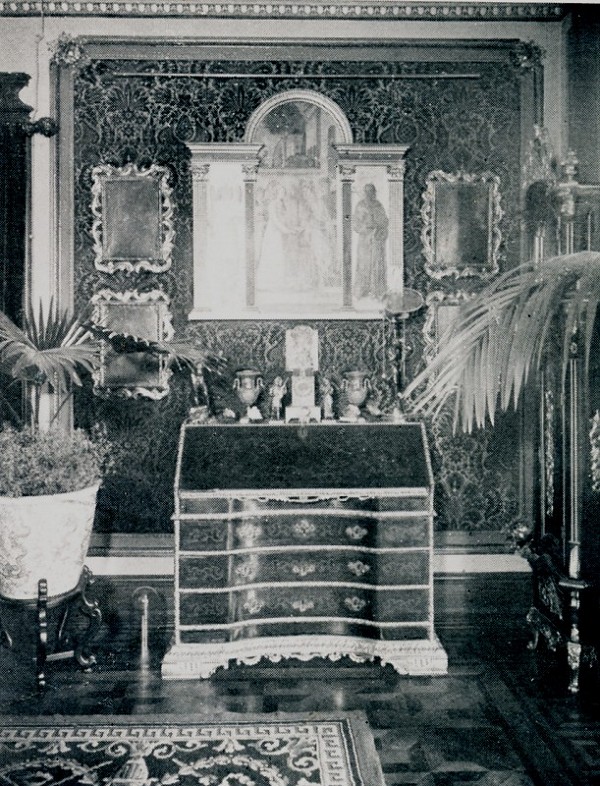
Larger secretary from the first half of the 18th century, Italian marquetry work with frames of sculpted and gilded wooden moldings. Foto Alice and James Keiller, Svenska Hem 1921.
Marquetry (also spelled as marqueterie; from the French marqueter, to variegate) is the art and craft of applying pieces of veneer to a structure to form decorative patterns, designs or pictures. The technique may be applied to case furniture or even seat furniture, to decorative small objects with smooth, veneerable surfaces or to freestanding pictorial panels appreciated in their own right.
Marquetry differs from the more ancient craft of inlay, or intarsia, in which a solid body of one material is cut out to receive sections of another to form the surface pattern. The word derives from a Middle French word meaning "inlaid work".
The veneers used are primarily woods, but may include bone, ivory, turtle-shell (conventionally called "tortoiseshell"), mother-of-pearl, pewter, brass or fine metals. Marquetry using colored straw was a specialty of some European spa resorts from the end of the 18th century. Many exotic woods as well as common European varieties can be employed, from the near-white of boxwood[1] to the near-black of ebony, with veneers that retain stains well, like sycamore, dyed to provide colors not found in nature.
At the end of the 17th century, a new influx of French Huguenot craftsmen went to London, but marquetry in England had little appeal in the anti-French, more Chinese-inspired high-style English furniture (mis-called 'Queen Anne') after ca 1720. Marquetry was revived as a vehicle of Neoclassicism and a 'French taste' in London furniture, starting in the late 1760s.
A